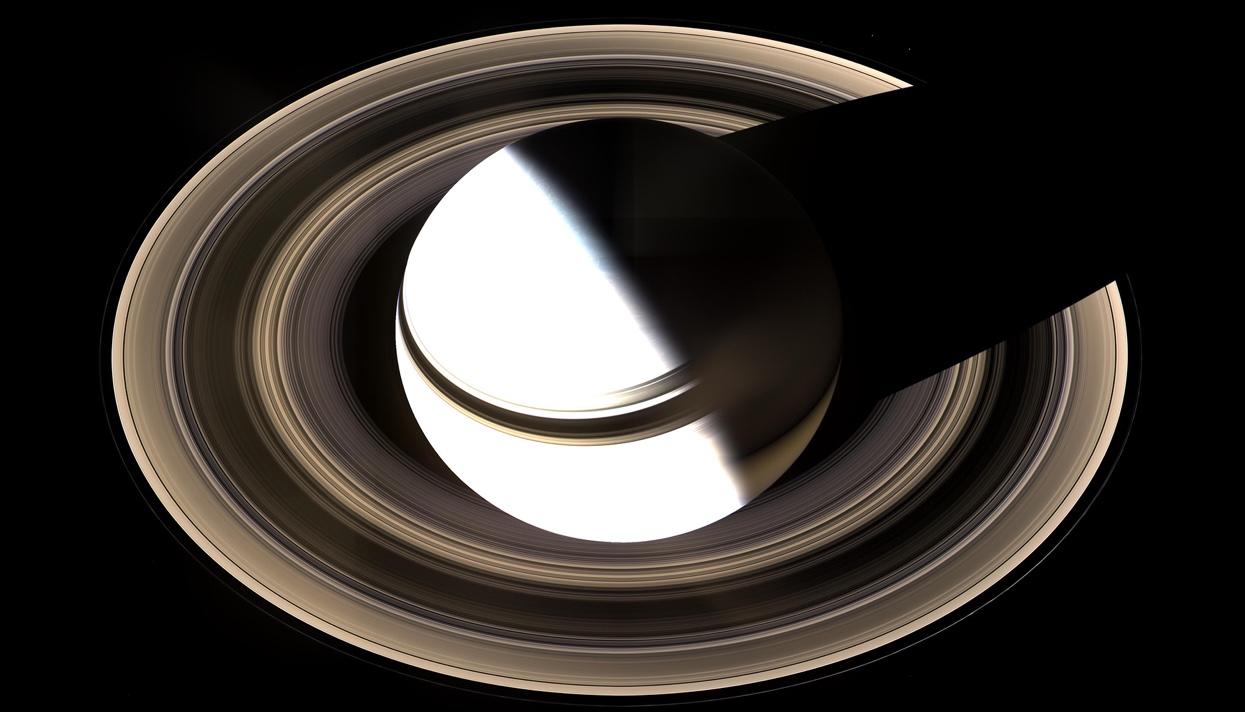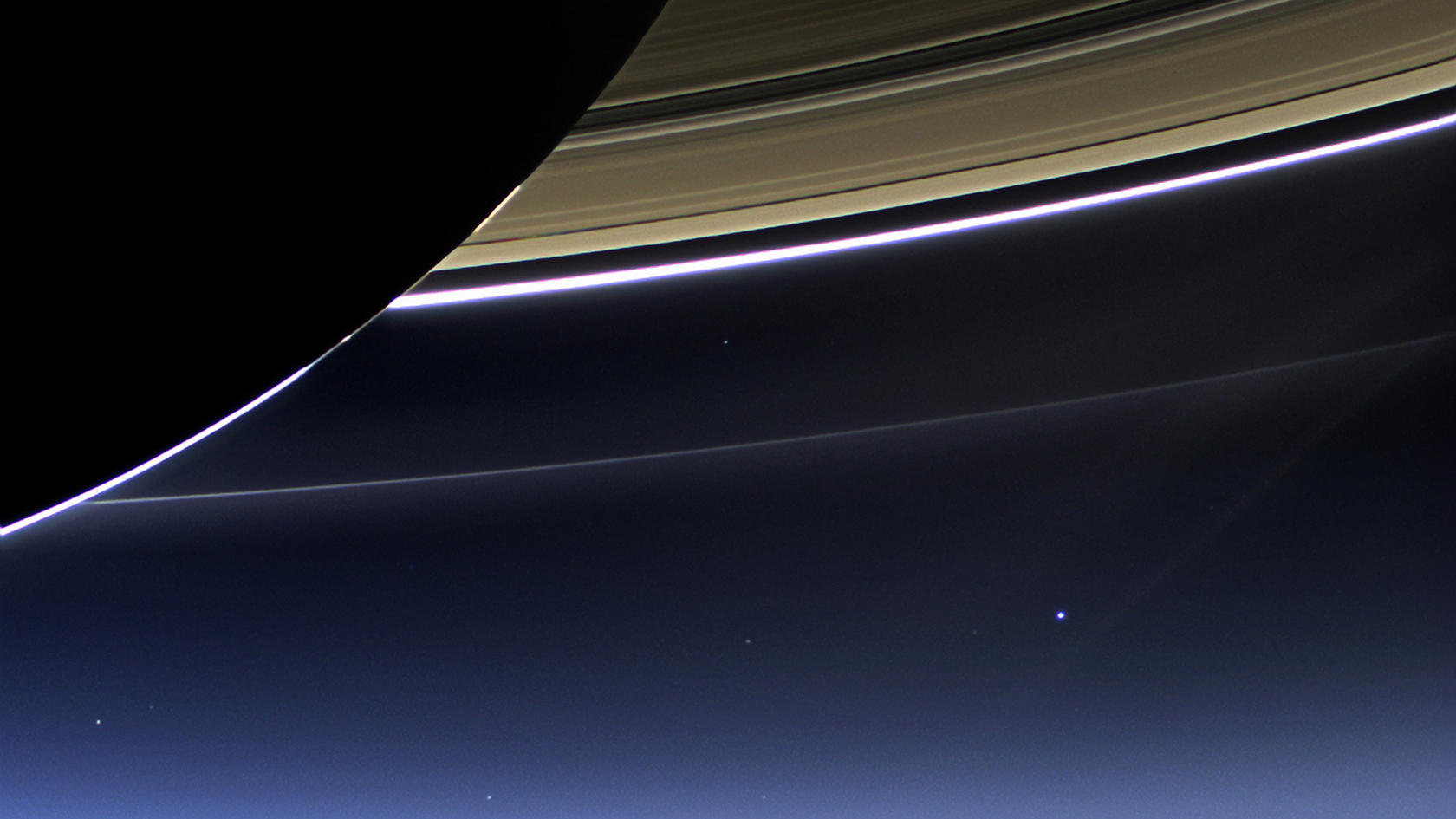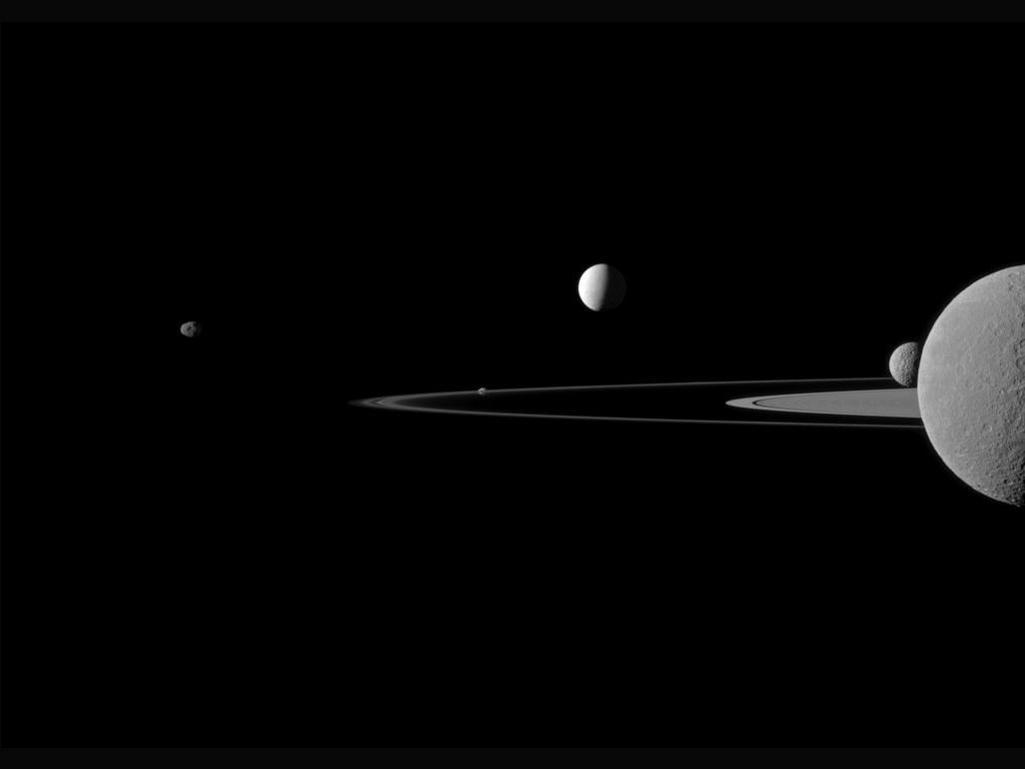Cassini probe completes mission for 20 years

In mid-August, Geektimes published material that the Cassini probe was already close to completing its mission. For many years that the probe spent in space, he was able to get a lot of useful information for science. Thanks to him, scientists have found out the structure of the rings of Saturn, learned about the satellites of this and other planets. In addition, it was Cassini who helped find out that water (in any form) in the Solar System is the rule rather than the exception. The presence of ice crust and, possibly, ocean of liquid water under it has been proven for Enceladus and Europe . Enceladus Cassini investigated repeatedly, not so long ago, the probe studied the cryovolcanoes of this planetoid.
But everything comes to an end, and the mission of Cassini is over . The device plunged into the atmosphere of Saturn, where he found his last refuge. Even dying, the probe was able to collect additional data on the atmosphere of the giant planet. Actually, it was planned by scientists, because nothing in science should be wasted. The last photo sent by Cassini was taken already in the atmosphere of Saturn, it was taken using an infrared sensor. The picture was taken 15 hours before the scientists lost the probe signal.
The last “forgive” was received at about 2:55 pm Moscow time. After that, the connection with the device was interrupted.
The final stage of research began in April 2017. Then the device began to make "shuttle" flights in the rings of the giant planet. A total of 22 such flights were made, after which the vehicle ran out of fuel for maneuvers. Without this, the device became impossible to control. And without the ability to transfer data, fly in a certain direction Cassini is useless. Therefore, scientists have made a difficult decision to destroy the probe.
Signals from the probe on Earth were received for another 83 minutes after the death of the spacecraft - yet the distance from Saturn to Earth is enormous. Experts are now hoping that before his death, the probe was able to transmit information, which after detailed analysis will allow to learn more about the features of the structure of Saturn. The studies took scientists from 17 countries. Data from the station was processed by more than 250 experts from around the world. Cassini transferred to the Earth 35 gigabytes of data, he took 453 thousand pictures.
Cassini began his last flight from the North Pole, and the flight altitude decreased from a maximum of 72.4 thousand km above the clouds as the flight continued.

“None of the man-made devices was so close to Saturn. We could only assume the structural features of the giant planet, ” said Dr. Earl Maze, the head of the entire mission, this year.
NASA has published a list of the most important discoveries made by the probe. In addition to what has already been reported above, it is also a relatively detailed study of Titan, Enceladus and Yapet. The device often made detailed pictures of auroras and other atmospheric phenomena on the giant planet.
All recent photos of the probe can be found on Twitter using the hashtag #CassiniGrandFinale.
The probe was launched from Earth on October 15, 1997. It was created by an integrated team of specialists from NASA, the European and Italian space agencies.

Scientists extended the Cassini mission twice, but it was endlessly impossible to do. In addition to fuel, another problem arose - damage to the probe equipment under conditions of cosmic radiation. It was simply impossible to leave the device in the orbit of Saturn - he could have fallen on Titan or Enceladus. These planetoids, according to some experts, may well be suitable for life. And leaving traces of earthly life on such objects is worthless. That is why experts have decided to complete the mission of Cassini, sending him to certain death in the depths of the atmosphere of Saturn. Scientists do not consider the giant planet to be habitable, therefore they decided to complete the mission of the apparatus here.

Well, farewell, Cassini, we will miss you!
All Articles